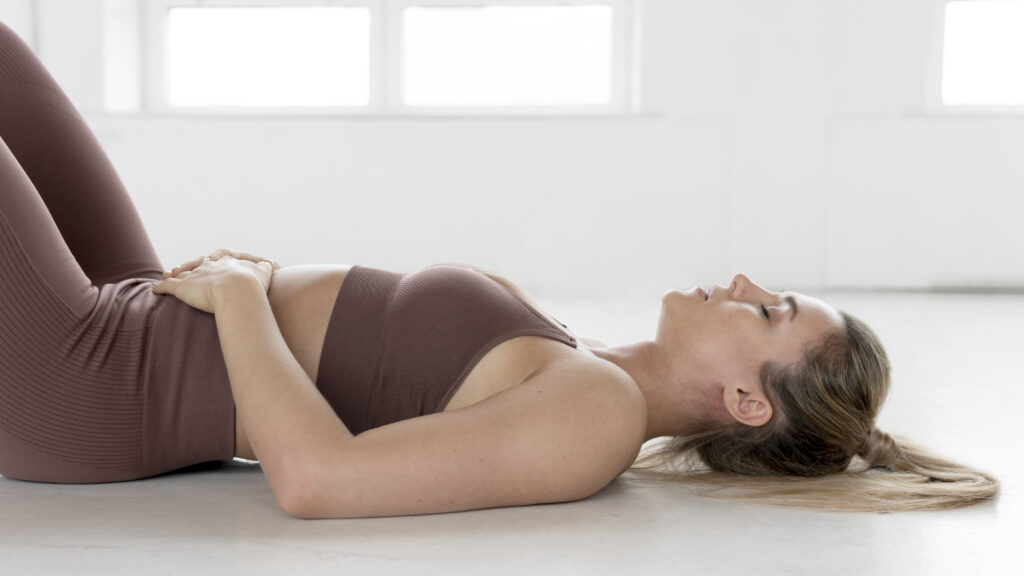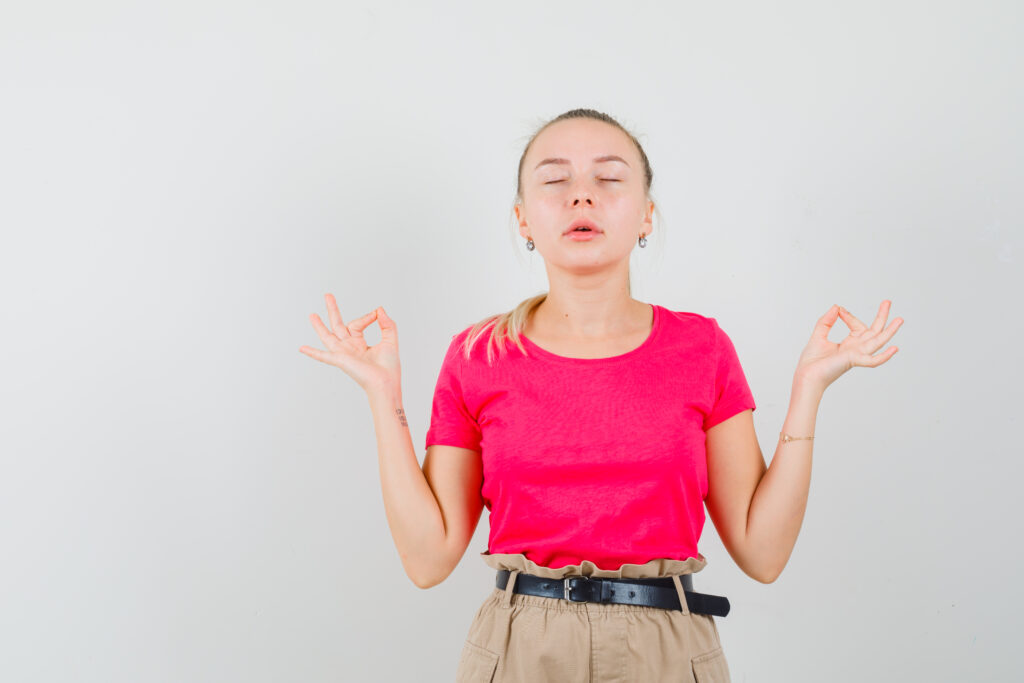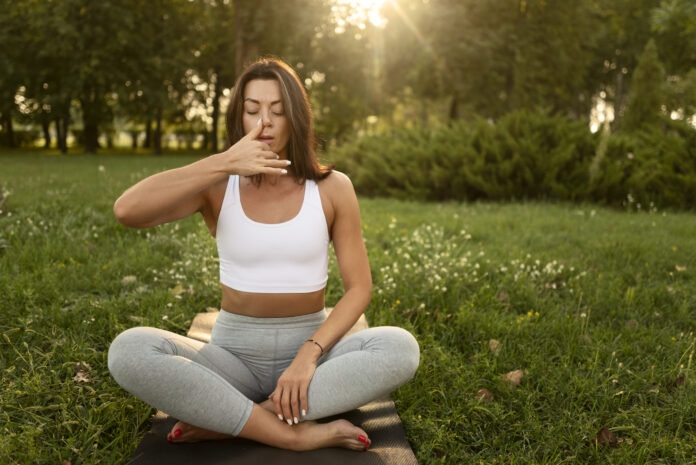Breathing and stress are associated somehow. Breathing Exercises help you release tension. You can notice it by taking a deep breath in them, letting it out in a stressed condition. This article will help you understand the relationship between breathing exercises and stress relief.
Breathing practice can help you feel less anxious and rather relaxed. Making such breathing techniques a part of your routine will ease stress. However, before starting any breathing exercise, keep these things in your mind:
- Wear easy-to-carry clothes.
- Perform breathing exercises at the same time every day. This regularity will help you in getting the best results.
- Select a comfortable place to do a breathing exercise. This place should be your bedroom or your living room.
- Do it as a recreational activity. Enforced breathing techniques can make you feel more stressed.
In addition, breathing exercises have one more advantage i.e. time-saving technique. Yes, most breathing exercises can be done within a few minutes. However, if you have much time you can spend 15 minutes on this exercise. More the time you spend doing breathing exercises the benefits.
Dealing with high levels of stress and living in a depression phase makes you unfit for your surroundings. Breathing exercises help you feel calmer and relaxed in such situations. These exercises do not waste your precious time.
How to Get Started?
Here are a few ideas to start breathing exercise safely:
- Practice breathing exercises whenever you need but try to perform such exercises according to a set schedule.
- Start with 5 to 6 minutes a day, then increase the time as you feel easier and more comfortable doing exercise.
- Practice such exercises several times a day.
Keep on reading, as you will learn how to do different breathing exercises. You may find the best option for your stress management.
Relationship between Breathing and Stress
Breathing is a gaseous exchange between your internal and external environment. In Simple Words during breathing, you exhale carbon dioxide and inhale oxygen. Your lungs primarily perform this process. Muscles found in your lungs that help in the movement required for the movement of lungs and diaphragm.
Whenever you feel stressed, your breathing patterns change. Generally, in the anxiety phase you take small, shallow breaths, using your shoulders rather than your diaphragm to expel and absorb air from and into the lungs respectively. This breathing style disturbs the balance of gases in your body.
Moreover, hyperventilation and shallow over-breathing cause prolonged feelings of anxiety. This condition makes the physical symptoms of stress worse. You can improve some of these symptoms by controlling your over-breathing.
How does Relaxation Response Occur?
In a relaxed state, you typically breathe through your nose, and the rate of breathing remains balanced in an even and gentle form. You may follow a relaxed breathing pattern deliberately to calm your nervous system which is controlling your body’s involuntary functions. Several physiological changes are associated with a controlled breathing technique. You can feel such changes, including:
- Increased physical energy.
- A balance in carbon dioxide and oxygen levels in your blood.
- Decreased blood pressure and heart rate.
- Increase in the feelings of well-being and calmness.
- Improvement in the function of the immune system.
- Reduction in building up of lactic acid in your muscle tissues.
- Reduction in the levels of stress hormones in your blood.
However, all these benefits are directly linked with a controlled or planned breathing technique. Without a proper breathing exercise you cannot get the advantages mentioned above to lower your stress level. Therefore, for your convenience, the most adopted and easiest breathing exercises are mentioned in this article. You can try them or one which can help you in this regard.
Alternate -Nostril Breathing
Alternating between the nostrils is a common pattern. It happens when one of your nostrils gets blocked at a time as you breathe through the other. This is the best breathing technique to relieve your anxiety in a seated position. That May help you to maintain your posture as well.
Let’s know how it’s done!
- Bend your index and middle figures towards your palm while leaving your thumb, ring, and pinky finger extended. This is a common type of yoga.
- Now use your thumb to close your right nostril and inhale through your left nostril.
- Then close your right nostril with your thumb and open your left nostril to exhale through it.
- Repeat a maximum of two rounds of this pattern of breathing.
- When you feel lightened or relaxed to some extent, take a break.
- Open your both nostrils and start breathing normally.
Belly Breathing Belly breathing is also known as abdominal breathing and is a common practice to release stress. This breathing pattern also involves the movements of your diaphragm. Regular practice of this breathing exercise daily for 15 to 20 minutes can help reduce anxiety and stress.
Belly breathing is also known as abdominal breathing and is a common practice to release stress. This breathing pattern also involves the movements of your diaphragm. Regular practice of this breathing exercise daily for 15 to 20 minutes can help reduce anxiety and stress.
To perform this breathing exercise, you need a comfortable and quiet place where you can sit or lie down easily. Start by sitting on a chair cross-legged or lying on your bed with a soft pillow under your head and one under your knees.
Let’s learn how to do this exercise!
- Don’t force your belly inward by clenching or squeezing your belly muscles. Allow it to get relaxed.
- Breath Start breathing through your nostrils so that the air can move through your nose downward and you can feel your stomach rise.
- Feel this rise and fall with your hand putting on your chest and belly.
- Now, exhale gently through your pursed lips. With noticing your chest size with your hand that may remain relatively still.
The frequency of the sequence is different for different people. However, the safest way is to vary the frequency according to your health. For example, you can start by doing this breathing exercise three to four times a day for a duration of five to ten minutes.
Box Breathing
This is the simplest breathing technique to reduce stress and can be performed easily at home. This is also known as four-square breathing. This is a breathing practice that is done according to the rhythm of a song. If you have ever done this you are already familiar with this breathing exercise.
You can do this by following the steps jotted below:
- Count to four and keep exhaling.
- Then keep your lungs empty for four counts. Now, inhale for a count of four.
- Restrict air into your lungs for a count of four.
- Exhale and repeat the pattern at least four times.
4-7-8 Breathing Exercise
This is also called a relaxing breath. This helps to relax your nervous system naturally. If you’re a beginner, start this exercise by sitting with your back straight. After doing a lot of practice with this type of exercise you can perform it on your bed easily.
You can do this exercise by:
- Keeping your tongue tip stuck against the ridge of tissue behind your upper teeth, throughout the duration of exercise.
- Exhaling from your mouth completely.
- Now, close your mouth and inhale through your nostrils.
- Hold your breath for 2 to 3 seconds.
- Then exhale completely through your month again.
Mindfulness Breathing Exercise
Focus on your breathing pattern keenly and keep your attention on the present without allowing your mind to think about your past or the future, is called mindfulness meditation. Mindfulness breathing is similar to this type of meditation because in this exercise you engage your mind in breathing practice that serves the same purpose i.e. ease your anxiety.
A mindfulness breathing exercise involves a permanent focus on your in and out of the air. It is like breathing in calm and breathing out stress. In case of feeling distracted, you can take a deep breath and gently return your attention to your present activity.
Pursed Lip Breathing Exercise
This is the simplest exercise that helps you slow down your breathing pace. Applying deliberate effort to slow down the breathing rate is a useful way to save your energy during strenuous physical activities, including lifting heavy weights, climbing stairs, or bending. You can do pursed lip breathing exercises at any time of the day. Try to learn this practice carefully. For this, you can practice it at least five times a day. Let’s try to do it:
- Start with relaxing your shoulders and neck.
- Now, inhale through your nose for 4 counts and keep your mouth closed.
- Purse your lips as you are going to whistle.
- Exhale air slowly through your pursed lips.
Breath Focusing Exercise
To perform this exercise you have to focus on a repeating phrase or word while breathing. The word you choose should be a relaxing word that can bring a smile or happiness to you. This repetition of words or phrases helps you in sticking to your exercise pattern.
As a beginner, you can start with a 10 to 15-minute session. However, you can increase the duration gradually by having more skills in this regard.
You can do it by following the jotted steps:
- Lie on a comfortable bed or yoga mat.
- Focus on your breath and try to change the pattern of breathing according to your choice.
- Keep alternating between deep and normal breaths for a few minutes.
- Note all the changes that occur in your abdomen during inhalations.
- Note the comparison between deep and shallow breathing.
- Perform deep breathing exercises for a few minutes.
- Then let out a loud sigh with each exhale.
Coherent Exercise
This practice will bring relaxation to your nerves and support your immune system. The air you exhale washes away all anxiety from you.
Coherent breathing is also known as resonant breathing exercise. Breathing at the rarest of 6 full breaths per minute can help you achieve the rate of inhaling and exhaling required to practice this technique.
This maximum breathing rate increases your heart rate variability and lessens the stress. According to studies, the stress symptoms can be diminished when coherent breathing is combined with Iyengar yoga practice.
Let’s learn how to practice this breathing exercise!
- Inhale speedily for a count of 6.
- Exhale speedily for a count of 6.
- Practice this breathing pattern continuously at least for 10 minutes.
Sitali Breath Exercise
This breathing pattern helps lower your body temperature and relieve your stress. Try to have easy breathing and don’t force speedy breathing. Choosing a place with a pure environment is essential for this exercise. Sitali breathing exercise can give you best results in relieving stress if performed at a place free from air pollution and allergens.
How to do it?
Select a comfortable position to sit easily.
If you feel it is difficult, you can pursue your lip’s.
Then inhale through your mouth.
Exhale out through your nose.
Practice this breathing exercise for 5 to 7 minutes continuously.
Conclusion
Trying most of these breathing exercises can help relieve stress. Talk to your doctor if you don’t feel better with these breathing exercises. You can Consult a respiratory therapist or a yoga trainer to learn more about such breathing exercises which can bring comfort to your life. If you feel any discomfort while practicing any breathing exercise to relieve your stress, it is good to discontinue the practice immediately.
Pay more attention to your breathing at rest or when you feel stressed. Comparing breathing rate and breathing pattern can help you learn about your physical and mental health. Practicing breathing exercises regularly can calm your body and induce relaxation in your body and mind.







